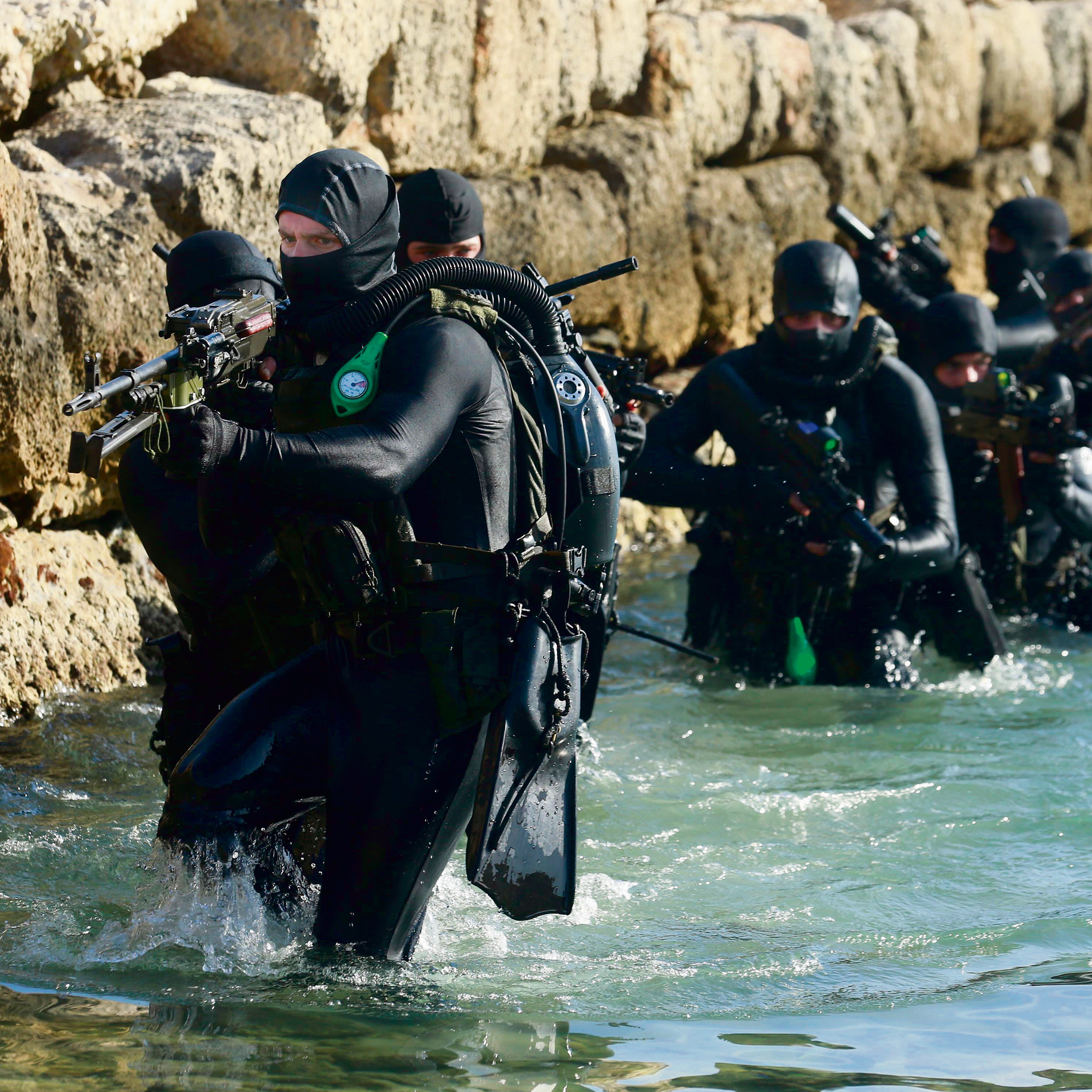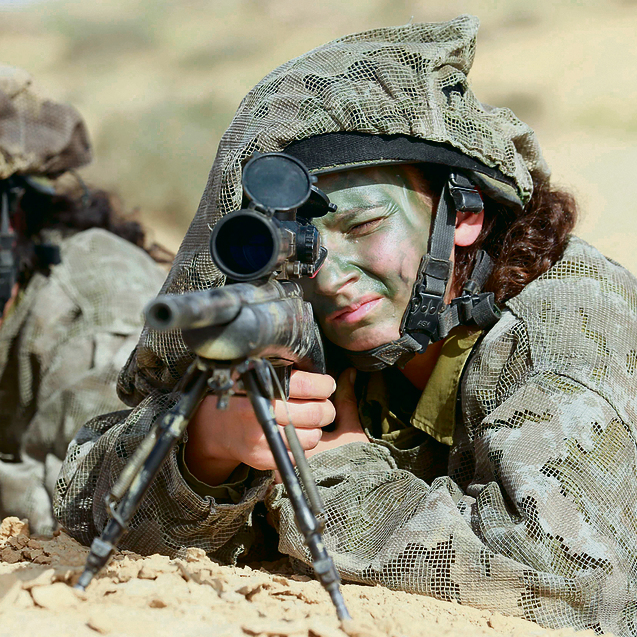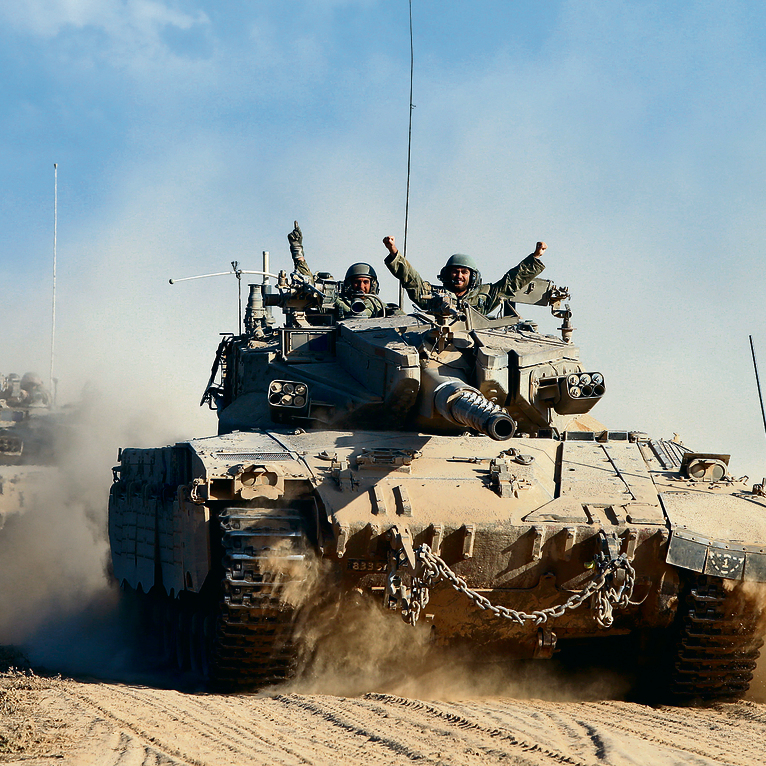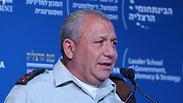
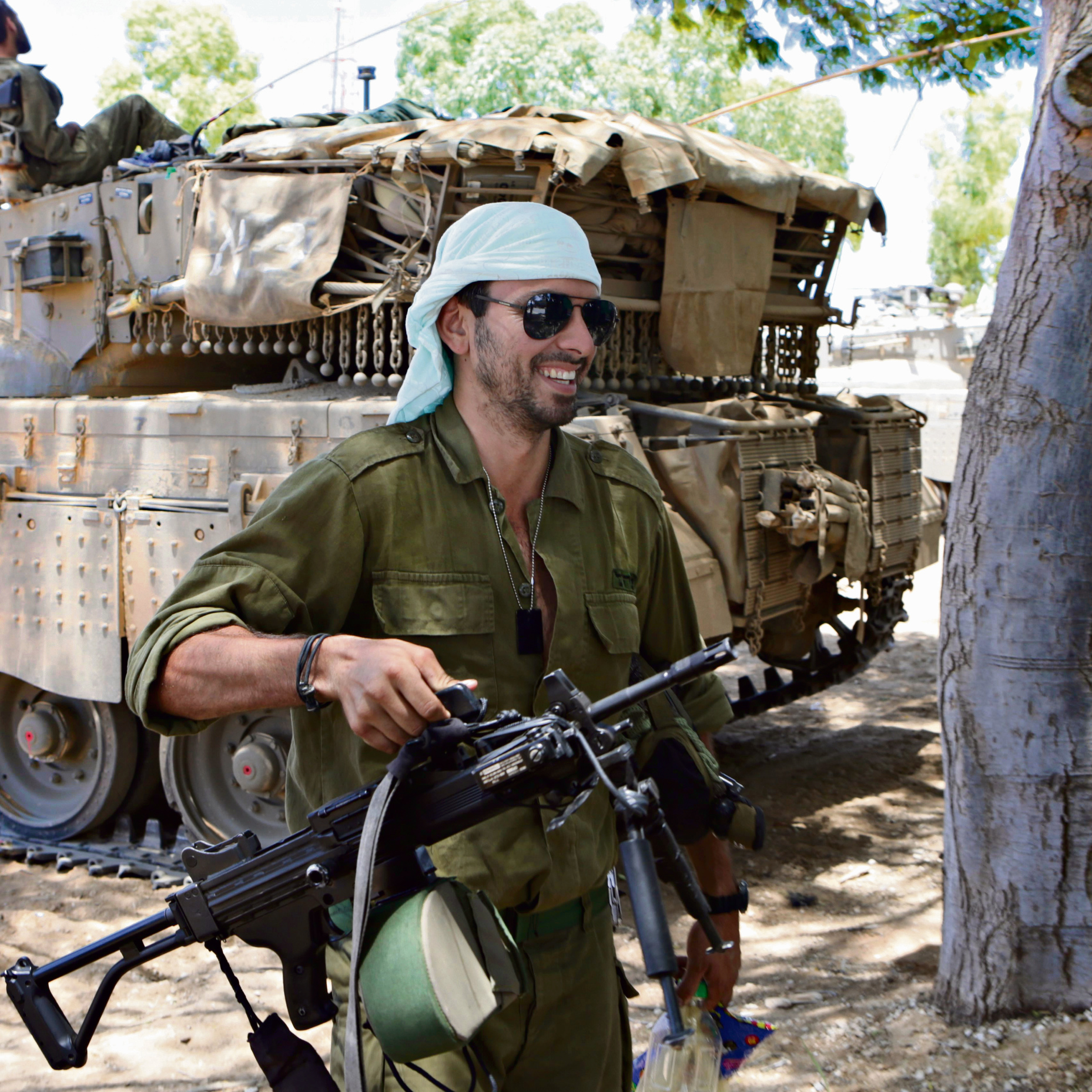
The IDF in 2020: A ‘people’s army’ alongside a professional army
According to Chief of Staff Eisenkot’s plan, in three years from now the IDF will resemble the US Special Operations Command—a functional command training and operating ‘a different army,’ which doesn’t think and act like a conventional army. The combat system will be comprised of four different armies, and elite units will operate under the Depth Corps’ umbrella as an all-purpose professional army.
The audience was comprised of several dozen officers, different levels of commanders of the special forces units: Sayeret Matkal, Shaldag, Shayetet 13 and other mysterious units, including commanders of special reserve units. The leaders of those special units, from all forces, sat in the front rows. It was hard to distinguish between people from the Navy, from the Air Force, from the Intelligence Directorate and from the Ground Forces. The audience also included people in plain clothes from the civilian intelligence organizations.
The commanders who filled the room were not preparing for a future war this time. The lessons they heard will likely be implemented in the next operations, perhaps even tomorrow morning. While they attended the discussion, their subordinates were engaged in different activities beyond the state’s borders, in close and far arenas. These forces are continuously active, all days of the year, as part of “the war between wars.” The special forces are the IDF’s “boots on the ground,” collecting intelligence and doing anything that would bring a less prepared enemy to the next war.
This periodical conference, which takes place several times a year, almost seems like a surreal sight to an onlooker. It’s only in the past two or three years that all these special units, which were the pride and joy of the different bodies’ commanders, turned into one coordinated body. Until then, each of these units had its own combat doctrine and measures. They served as the spearhead of the bodies they belonged to—Sayeret Matkal in the Military Intelligence Directorate, Shayetet 13 in the Navy, Shaldag in the Air Force and other classified units. At times of war, however, they weren’t always able to utilize their abilities to the fullest.
The language has completely changed too. Today, they no longer talk about commando teams, but about a cluster of special forces working in coordination with each other, under the professional umbrella of the Depth Corps. At a time of war, this massive force—which includes hundreds of fighters in regular and reserve duty—will be the IDF’s strategic arm on the ground and accurately hit critical targets deep within enemy territory. By 2020, the size of the special forces is expected to grow even more, the volume of the activity they will be able to perform will be doubled and tripled, and the number of headquarters running these operations in the General Staff and in the different commands will increase accordingly.
What is developing before our eyes resembles the United States Special Operations Command (SOCOM)—a functional command (as opposed to a regional command), which trains and operates “a different army,” an army which doesn’t think and operate like the conventional army. The special forces’ growth is a product of the dramatic change that has taken place in the nature of the fighting and in the enemy’s character: Dealing more frequently with terrorism and with “hybrid” bodies—which act like a state and have taken the path of terrorism—like Hezbollah, Hamas, the Islamic State, the Taliban and al-Qaeda. As far as the IDF is concerned, it’s a move to a professional army that will operate parallel to the “people’s army.” A different army.
53-year-old fighters
For several decades, the army has been “torn” between the ethos of an egalitarian and voluntary people’s army and the need for a professional army. The more advanced and expensive weapons systems were purchased, the more digitization took over our lives and the more cyber entered the battlefield area—the need for a professional army grew. In Chief of Staff Gabi Eisenkot’s era, this process is reaching a new high. While the borderline separating between the people’s army and a professional army has yet to be crossed, in 2020 we’ll already be able to see enormous gaps between the different types of service and armies.
The “special forces army” will be based on a standing army, mainly a short one. In Sayeret Matkal, for example, fighters will enroll for three years of standing army and undergo an officers’ course. All of these dozens of new officers in Sayeret Matkal, according to the chief of staff’s vision, are supposed to feed the elite infantry brigades in regular and reserve army and improve them. In the naval commando, fighters began signing up for career army a long time ago. In Shaldag, some of the fighters will enrol for standing army.
Training these soldiers is very expensive, but since they’ll be more professional and serve for longer, it will make it possible to recruit less people. Half of the soldiers serving in the special forces, mainly the fighters, will serve in an initial standing army framework. Officers and fighters with special professions will be able to continue in career army until the age of 35. Officers who will be promoted to the rank of lieutenant-colonel will serve till the age of 42. The length of service for those designated for the rank of colonel and higher won’t be limited. This arrangement will apply to the entire standing army as part of the agreement with the Treasury.
It’s perfectly clear that the special forces’ service conditions will be different from those of the conventional volunteer army, and the salaries will be higher.
The differentiation between the soldiers serving in the different tracks has existed for years now in the Air Force and in the Navy and in certain units of the Intelligence Corps. An operator of unmanned aerial vehicles, which make up a significant share of the aerial battle, enrolls for four years of standing army. The Air Force’s maintenance branch is largely comprised of non-commissioned officers who can serve till the age of 53. It would be irrational to put a soldier in mandatory service in change of the maintenance of a warplane that costs $100 million. The ground forces in 2020 are simply being brought up to speed. A growing part of the army is becoming professional.
Schnitzel and entrecote
The commanders of the Commando Brigade, which was established during Eisenkot’s term, were sitting in the same investigation room. The Commando Brigade doesn’t formally belong to the “special forces army.” It’s the leading arm of the “No. 2 army” to this end, which is made up of the IDF’s regular decision divisions—the 36th division, the 162nd division and the 98th division. These divisions have rather broad components of reserve forces, which are supposed to be as competent as the regular forces.
The Commando Brigade—which incorporates the Duvdevan, Egoz, Maglan and Rimon units—reflects an operational world view of massive force, which could act independently over time in decisive points in enemy territory (unlike the special forces, which operate in small teams in high-quality targets).
The Commander Brigade commanders’ presence in these conference is the army’s way of saying that the professional level required from the division is similar to the level required from the special forces army. The plan in the Commando Brigade as well is that the fighters will enroll for a short career army service.
In the Oketz canine unit, which escorts all the ground forces’ spearhead units, fighters will enroll for a longer period of time. Some of will serve seven years, like the dogs: The fighter will enlist with the puppy, undergo a two-year training process with the dog in the different special units, and after five years of activity he will complete his service and be able to adopt the dog.
Each of these love affairs between a dog and a fighter costs the state a fortune. The direct spending on purchasing the dogs is NIS 2.5 million (about $700,000) a year. The indirect expenses on building the dogs’ power, a puppy house for developing abilities, veterinary services and more, amount to nearly NIS 3.5 million a year—just for the dogs. Nevertheless, the ability to keep the dog trainers throughout the dog’s entire service in the IDF saves the army the need to train new dog breeders and cancels the adaptation period between a dog and a new trainer.
The dog story is just an example. It’s the name of the game in other spearhead unit as well: Longer and more thorough training, more combat experience and weapons, the latest in intelligence and communication. The Command Brigade is already one of the most active brigades in cooperating with foreign fighting units. Several weeks ago, the Egoz Unit conducted a joint drill with the Cypriot army simulating landing, presence and fighting “deep within enemy territory” in the neighboring island. The Command Brigade fighters train with the United States Army Rangers in Israel and abroad and with other armies, to prepare the ground for possible collaborations in the future according to the regional combat outlines.
The Jordanian army, by the way, underwent a similar process. One-third of its armored force and artillery have been taken out of service in the past year—together with their career soldiers—and replaced with a new commando division. It wasn’t simple. The process of adapting the Jordanian army to the regional reality required the replacement of the heads of the Jordanian general staff, including the chief of staff.
The revolution in the IDF won’t lead to the chief of staff’s replacement. Eisenkot, who didn’t come from the special forces, was actually the person who decided twice on the development of the ground forces’ long-range arm. After completing his term as Northern Command chief, he headed the committee which recommended the creation of the IDF’s ninth command—the Depth Corps—which is the umbrella headquarters of all special forces. Even when the need for the Depth Corps was questioned, in light of the objection of the arms operating the special forces, Eisenkot insisted on reinforcing the command.
The Commando Brigade is the spearhead of the regular decision divisions, which include armored regimental combat teams and aerial movable units (parachuted and airborne). Just like the Command Brigade trains for half a year and engages in operational activity the other half of the year, all the regular army’s maneuvering infantry brigades will move in the coming year to an unprecedented situation which has not been seen in the IDF for more than 20 years: Seventeen weeks of training, 17 weeks of operational activity, and so on and so forth.
This ritual is aimed at bringing the regular maneuvering units—the Infantry, Armored and Engineering Corps—to a level of operational competence which is defined by the army as being in the “top percentile.” The ground forces’ budget in the long-term Gideon Plan, which is led by Eisenkot, is largely dedicated to these decision divisions. As a senior officer put it, “The decision divisions will eat entrecote, while the rest will settle for schnitzel.”
The fighters and the career soldiers in the decision divisions—as in the special units—will enjoy a clear preference in their service conditions compared to the large mass of combat supporters. A fighter will earn 30 percent more. A career soldier in a combat unit who completes a long serving in standing army (up to the age of 42) will study for two academic degrees during his service at the army’s expense. Non-combat career soldiers will be able to complete an academic degree—at the army’s or at their own expense— by receiving days to study during their service. In special cases, the army will fund the first year of MA studies. The plan is to increase the army’s academization level and lure the young soldiers—mainly in combat units—through academic studies.
In the cyber units, by the way, which are a codename for the army’s advanced technological system, there are different temptations. The recruit begins his academic studies on draft day. University representatives visit the units and train soldiers for a BA in computer science during the service. In a bid to leave the cyber fighters in standing army for four or five more years, they receive an incentive in the form of a NIS 19,000 grant every six months. So the differentiation is growing deeper in the technological system as well.
Over the years—on the backdrop of budget constraints, changes in threats, new power building emphases and social changes—the ground forces became increasingly smaller. We will compensate for diminishing the maneuvering divisions, military officials said, by introducing new weapons and maintaining a unified, high level of all the maneuvering divisions—in compulsory service and in reserve service. In 2020, however, we’ll realize that the army isn’t fulfilling this mission.
Chief of Staff Eisenkot decided that the top levels of the army must be perfect, even at the expense of other maneuvering forces. Eisenkot reached this decision following the ground forces’ mediocre performance in the Second Lebanon War, which managed to surprise even him as head of the Operations Directorate. Eisenkot arrived at that position from the Judea and Samaria Division, and he had thought at the time that the successful current security activity in the West Bank pointed to the IDF’s fighting abilities too.
The red containers
Eisenkot gave up on equality in advance. It isn’t apparent yet, but a quality gap is already developing between the maneuvering divisions known as “decision divisions” (or “Gideon divisional combat teams”) and the maneuvering reserve divisions, which the chief of staff refers to as “arena divisions,” and the territorial divisions. Contrary to the original perception—a smaller number of maneuvering divisions on a homogenous level—the “third army” has allegedly been born in the list of priorities. While the arena divisions are armored divisions for all intents and purposes, and are full partners in offensive missions in the army’s operative plans, they are not considered the top priority for the introduction of advanced high-quality weapons.
In the coming years, for example, the army is planning to arm itself with hundreds of defense systems for tanks and heavy armored personnel carriers, as well as with hundreds of new heavy APCs. Most will be allotted to the regular decision divisions, which are expected to reach their highest competence level by then. Chief of Staff Eisenkot is behind this fundamental decision and believes that the reserve divisions’ state—both in terms of equipment and definitely in terms of training, which has become intensive in the past two years—allows them to carry out the combat missions they will be tasked with in the best possible way.
The explanation for this inequality is not just budgetary reasons. The regular divisions are supposed to provide the immediate response to a deterioration in each of the regions, which is why the top priority is to supply them with the advanced equipment. It’s a logical explanation, but it won’t work from a metal perspective, and could create a credibility crisis in the reserve system. In Operation Pillar of Defense, when the Trophy active protection system against antitank missiles was introduced in some of the regular armored companies, it created a lot of resentment among reserve units which were supposed to operate alongside the regular units, in the same missions, without the defense system. “Is our blood cheaper than the regular soldiers’ blood?” the young reservists asked at the time.
It should be noted that in the past two years the IDF has been admitting to itself that there’s something wrong in the ground forces’ training process. The army invests more than NIS 4 billion a year in training—double the sum recommended in the Brodet Committee, which looked into the defense budget in 2007. The many days dedicated to the training and the huge investments are failing, however, to yield the required results in a modern battlefield. The IDF knows the truth: The time management in the training is insufficient, and the facilities are obsolete and are unsuitable for the expected combat arenas.
This is where a sub-plan called Aviv, as part of the Gideon Plan, comes in. As part of Aviv, which will reach its peak from 2020 onwards, the IDF is creating a system of advanced training facilities near the employment areas of the reserve forces and regular army: The Golan Heights, the Jordan Valley, etc. So the combat units will train in an environment which is as similar as possible to the expected battle areas. In the Golan Heights, the army will build a huge facility simulating a city and a large Hezbollah obstacle. Three huge simulation centers will also be built. An entire battalion will enter such a facility and perform a simultaneous simulation of all professions—starting from a driving simulator to a simulator challenging the battalion’s headquarters in the different forms of battle. The ground simulator will be connected to a simulator in which F-16 pilots will exercise at the same time, providing the training battalion with air cover. The old firing ranges will disappear and will be replaced by electronic firing ranges. These are just a few examples of the way the ground forces will train at the end of the decade
The methods of studying the enemy will change as well. Seventeen facilities for studying enemy intelligence will move between the units. The soldiers and officers will enter these facilities, which will be called “the red containers,” and receive the most up-to-date information on the abilities of the enemy they will face.
All this activity will be geared towards reducing the growing professional gaps between the “second army” of the decision divisions and the “third army,” the volunteer army, which is made up primarily of reservists. At the same time, in a bid to overcome one of the most serious weak points exposed in the Second Lebanon War—the operation of the headquarters—a command and control school was recently established under the leadership of another ground forces general, Major-General Yossi Bachar. This school trains headquarters from the battalion level to the corps level.
A fourth, relatively new functional branch is developing in the ground forces alongside the “three armies”: The “border defense system,” which is under the professional responsibility of the Combat Intelligence Collection Corps and engages in classical border defense in the different commands through intelligence collection battalions, the mixed-gender battalion, reserve units, the scout units, etc. This system includes everything that has to do with building an intelligence image near the borderline and preventing an immediate infiltration into Israeli territory.
Age does matter
In early July, the chief of staff appointed five new brigadier-generals. The average age of this group is 44.5. A year ago, the average age of colonels promoted to the rank of brigadier-general was 45.6. We are seeing a trend dictated by Eisenkot to the people responsible for human resources at the IDF: The IDF is about to get younger. The chief of staff doesn’t want to see 37-year-old regiment commanders. As far as he’s concerned, their first regiment commander position should be at the age of 32-33, so the company commander will be younger too. A lieutenant-colonel who reaches the age of 42 and has no promotion options in the horizon will be released. A major who is found unfit for the rank of lieutenant-colonel will be released at the age of 36, apart from 900 majors defined as “knowledge sources.”
In a bid to reduce the standing army’s size in the near future, and to make the army even younger, it has been decided to shorten the minimum length of time between the ranks of captain and major from four to three years. A few hundred staff and combat support positions will be civilianized. Professional non-commissioned officers required by the army—who are already receiving better compensation—will be able to serve till the age of 53 and retire with a full pension.
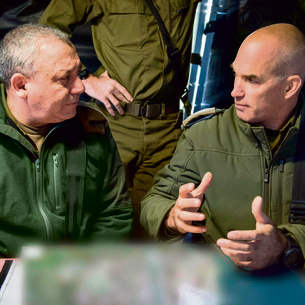
The goal is a younger command and modern ground forces adapted to the regional reality. But deepening the differentiation inside the army, and dividing it into “four armies,” may create fractures in the ethos of the people’s army. The value of equality—not just among those who enlist and those who don’t, but also among all those who enlist—is wearing out. This is a risky situation, as the erosion of a key Israeli ethos such as equal service could negatively affect the youth’s motivation to enlist. In the past, people who failed to make it into the best unit used to settle for a symbolic service. Today, when there are several armies within the IDF, people may refuse to serve in a “second-class or third-class army”. If the number of recruits drops because of the changes in the army, both the Israeli society and the IDF will look different. There is a price to pay for a professional army.
Similar, and equally troubling, processes are taking place among career soldiers. A 2016 report authored by the IDF Behavioral Sciences Department looked into the state of mind of the soldiers in light of the major cutback plan and the process of making the army younger, which set the retirement age from standing army at 42. The report points to difficult feelings among career soldiers in regards to the army’s commitment towards them. Asked if they would recommend to their friends to stay on for a long service in standing army, 50 percent said no. Only 69 percent said they had confidence in their senior command, compared to 82 percent in a survey conducted a year earlier. The report points to the career soldiers’ feeling of temporariness and to organizational instability, and it’s one of the prices the army will pay in the Gideon Plan.
The Gideon Plan has another heavy price: In addition to cutting 4,000 career soldiers’ positions, which means mass dismissals, 2,000 other career positions have been cut from the “traditional army,” mainly from the ground forces, and moved to the elite technological system. Most of the positions cancelled in the ground forces are of non-commissioned officers in the combat support professions, which is reflected in every corner in the logistic system—starting from munition to the emergency storerooms. The field commanders feel, therefore, that the professional base of maintaining tools such as tanks and APCs is growing weaker.
These two components—the career soldiers’ feelings and the damage to the logistic system—are threatening the entire Gideon Plan. A glorious building has been erected, but the foundations it stands on are unstable.















